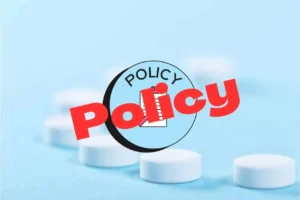Last Updated on September 30, 2024 by The Health Master
Adverse Drug Reaction
In the dynamic landscape of healthcare, ensuring the safety and quality of medical devices is paramount. One significant initiative in this regard is the Materiovigilance Programme of India (MvPI) and Adverse Drug Reaction (ADR), a comprehensive program launched in 2015 by the Ministry of Health and Family Welfare (MoHFW).
This article delves into the recent advisory from the Drugs Consultative Committee (DCC), emphasizing the active participation of State Licensing Authorities (SLAs) in the MvPI.
DCC’s Advisory on ADR Reports Submission
In its 62nd meeting, the DCC highlighted the need for SLAs across the country to actively engage in the MvPI and submit Adverse Drug Reaction (ADR) reports for Class A and B medical devices to the Indian Pharmacopoeia Commission (IPC).
This advisory underlines the critical role that SLAs play in the success of the Materiovigilance Program.
Role of State Licensing Authorities (SLAs)
The involvement of SLAs is pivotal in achieving the objectives of the MvPI.
Beyond Adverse Drug Reaction (ADR) reports submission, SLAs are urged to direct manufacturers to contribute to this vital data collection.
The MvPI aims not only to promote but also to facilitate adverse event reporting of medical devices, fostering a culture of safety and accountability.
Proposal from IPC, Ghaziabad
The IPC, serving as the National Coordination Centre (NCC) for MvPI, has proposed that the active participation of State Regulatory Authorities is crucial for the program’s success.
This proposal underscores the collaborative nature required to address the multifaceted challenges in the realm of medical device safety.
MvPI Objectives and Medical Devices Regulation (MDR) Rule 2017
The MvPI aligns with the Medical Devices Regulation (MDR) Rule 2017, which mandates comprehensive Post Marketing Surveillance data.
This includes vigilance reporting procedures and data collected by manufacturers, detailing complaints received and the corresponding corrective and preventive actions taken.
IPC’s Focus on Patient Safety
The IPC emphasizes that the MvPI primarily focuses on ensuring patient safety and enhancing the overall quality of medical devices.
The active involvement of State Regulatory Authorities is deemed crucial in achieving these objectives effectively.
Enhancing Adverse Event Reporting
Accurate and comprehensive adverse event reporting is imperative in the healthcare landscape.
The MvPI, with SLAs actively participating, aims to enhance the accuracy of reporting, ensuring timely intervention and corrective actions to safeguard patient well-being.
State Regulatory Authorities’ Pivotal Role
Beyond data submission, State Regulatory Authorities are identified as key players in promoting awareness about the MvPI.
Their role extends to educating healthcare professionals, manufacturers, and consumers across states, fostering a collective responsibility for patient safety.
DCC’s Meeting Conclusion
The conclusive remarks from the DCC meeting emphasize the collective responsibility of all States/UTs SLAs to submit Adverse Drug Reaction (ADR) reports of materiovigilance to IPC for Class A & B medical devices.
Simultaneously, all manufacturers are urged to be directed by SLAs to submit Adverse Drug Reaction (ADR) reports, reinforcing a unified commitment to medical device safety.
Background of Materiovigilance Programme
Initiated in response to alarming cases of malfunctioning medical devices causing harm to patients, the Materiovigilance Programme underscores the importance of proactive safety measures in the healthcare sector.
MvPI’s Impact on Patient Safety
Beyond addressing specific incidents, the Materiovigilance Programme plays a crucial role in reducing the likelihood of recurrence of harmful events, thereby elevating the overall quality of health products.
Participation of Various Professionals in MvPI
The Materiovigilance Programme is inclusive, allowing clinicians, biomedical engineers, clinical engineers, hospital technology managers, pharmacists, nurses, and technicians to actively report medical device adverse events, creating a comprehensive network of safety advocates.
Significant Cases Leading to MvPI
Several incidents, such as babies being burnt due to short circuits in incubators or issues with hip implants causing blood poisoning, have necessitated the establishment of robust safety programs like MvPI.
Timeline of MvPI Implementation
Since its launch in 2015, the Materiovigilance Programme has evolved, reaching key milestones in ensuring the safety and quality of medical devices. Continuous improvements and adaptations mark its journey over the years.
Conclusion
In conclusion, the Materiovigilance Programme of India stands as a testament to the collective commitment to patient safety and healthcare quality.
The active involvement of State Regulatory Authorities, as emphasized by the DCC, is integral to the success of the program.
It is a shared responsibility to ensure that medical devices meet the highest standards, safeguarding the well-being of patients across the country.
Disclaimer: This article contains information derived from the source mentioned below. Our team utilized an AI language model to rewrite and present the news or article in a unique format.
Battle Against Industrial Grade Excipients in Pharma Industry
Investigation into Tapentadol and Pregabalin: DCC recommendation
DCC recommends SLAs to submit Adverse Drug Reaction
The Urgent Need for a Unified System in Drug Safety: DCC
DCC proposes crucial amendments for enhancing Drug Regulation
DCC recommends Transparent Packaging for Eye Drops
FDCA Gujarat takes action against Pharma Companies
Decoding the Jan Vishwas Act on penalties for NSQ drug offenses
A Major Female Foeticide Racket Uncovered: Shocking Details Revealed
The Urgent Need for a Unified System in Drug Safety: DCC
Non Conviction Certificates and Performance Certificates online soon: FDCA Gujarat
FDCA Commissioner inaugurates Cadila’s API Plant in Gujarat
Gist of 31 Chapters on Schedule M
CDSCO Guidelines on Drug Recall
Drug Regulatory Authorities: Worldwide
SOPs for Videography in Drug Regulation Procedures
For informative videos by The Health Master, click on the below YouTube icon:
For informative videos on Medical Store / Pharmacy, click on the below YouTube icon:
For informative videos on the news regarding Pharma / Medical Devices / Cosmetics / Homoeopathy etc., click on the below YouTube icon:
For informative videos on consumer awareness, click on the below YouTube icon:











